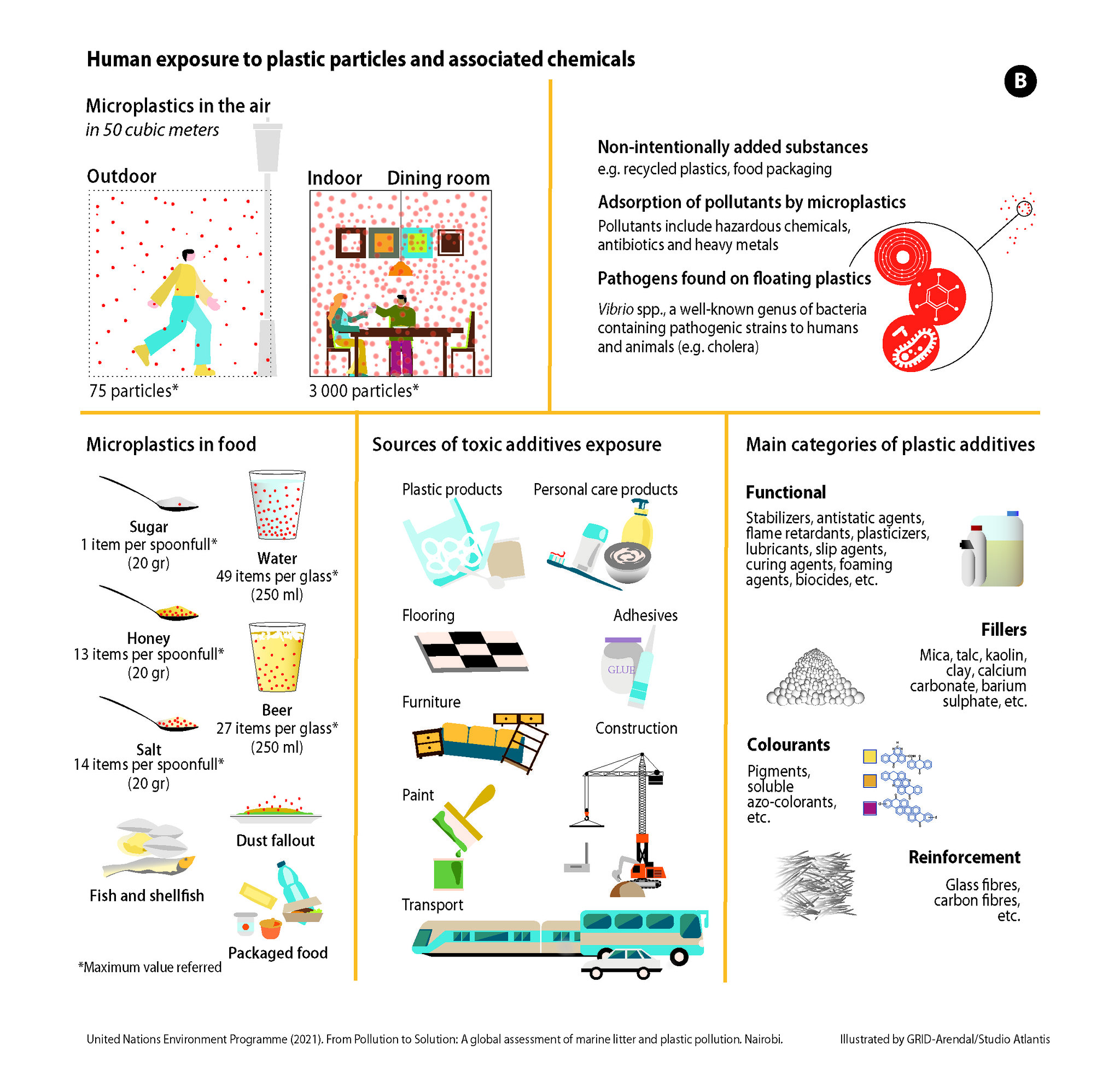Excerpt:
Every time you take a breath, you could be inhaling microplastics. Scroll to see how tiny and dangerously invasive they can be.
For years, scientists on the hunt for microplastics have found them almost everywhere. First, they spotted tiny pieces of plastic in the ocean, in the bodies of fish and mussels. Then they found them in soft drinks, in tap water, in vegetables and fruits, in burgers.
Now researchers are discovering that microplastics are floating around us.
They are suspended in the air on city streets and inside homes. One study found that people inhale or ingest on average 74,000 to 121,000 microplastic particles per year through breathing, eating and drinking.
“There’s just so much plastic around us,” said Sherri Mason, researcher and sustainability coordinator at Pennsylvania State University at Erie. “We wear synthetic clothes, and those are shedding microplastics. We work on synthetic carpets. We buy food wrapped in plastic.”
Scientists don’t yet know the exact health effects of all those plastic particles — but their concerns are rising. In recent years, research has shown for the first time that humans are breathing, eating and drinking microplastics in much larger quantities than previously thought. And that plastic is burrowing its way into almost every major organ.
Not only can those tiny particles infiltrate many parts of the body, causing inflammation, but plastics also have a laundry list of chemical additives: flame retardants, lubricants, solvents. These chemicals, in turn, can leach out of particles that have reached some of our most vulnerable organs.
“I call it the spaghetti and the sauce,” said Heather Leslie, an independent scientist who was part of the team that first discovered microplastics in human blood. “The spaghetti noodles are the polymer backbones and the sauce is the additives.”
Of the more than 10,000 chemicals used in the manufacture of plastic, scientists have identified over 2,400 as potentially toxic.
As plastic production increases, so do the risks to human health. In 1950, the world produced 2 million metric tons of plastic every year; last year, it was over 400 million metric tons.
Plastics, unlike other substances, don’t break down — they simply break up into smaller and smaller pieces. Of the roughly 8 billion tons of plastic that have been produced since 1950, less than 10 percent has been recycled. The rest accumulate in landfills, in the oceans or on beaches, slowly sloughing off into microplastics or even tinier nanoplastics.
Some of those particles enter our body when we breathe. Here’s how plastics move through our respiratory system and become entrenched in cells, threatening our health…









